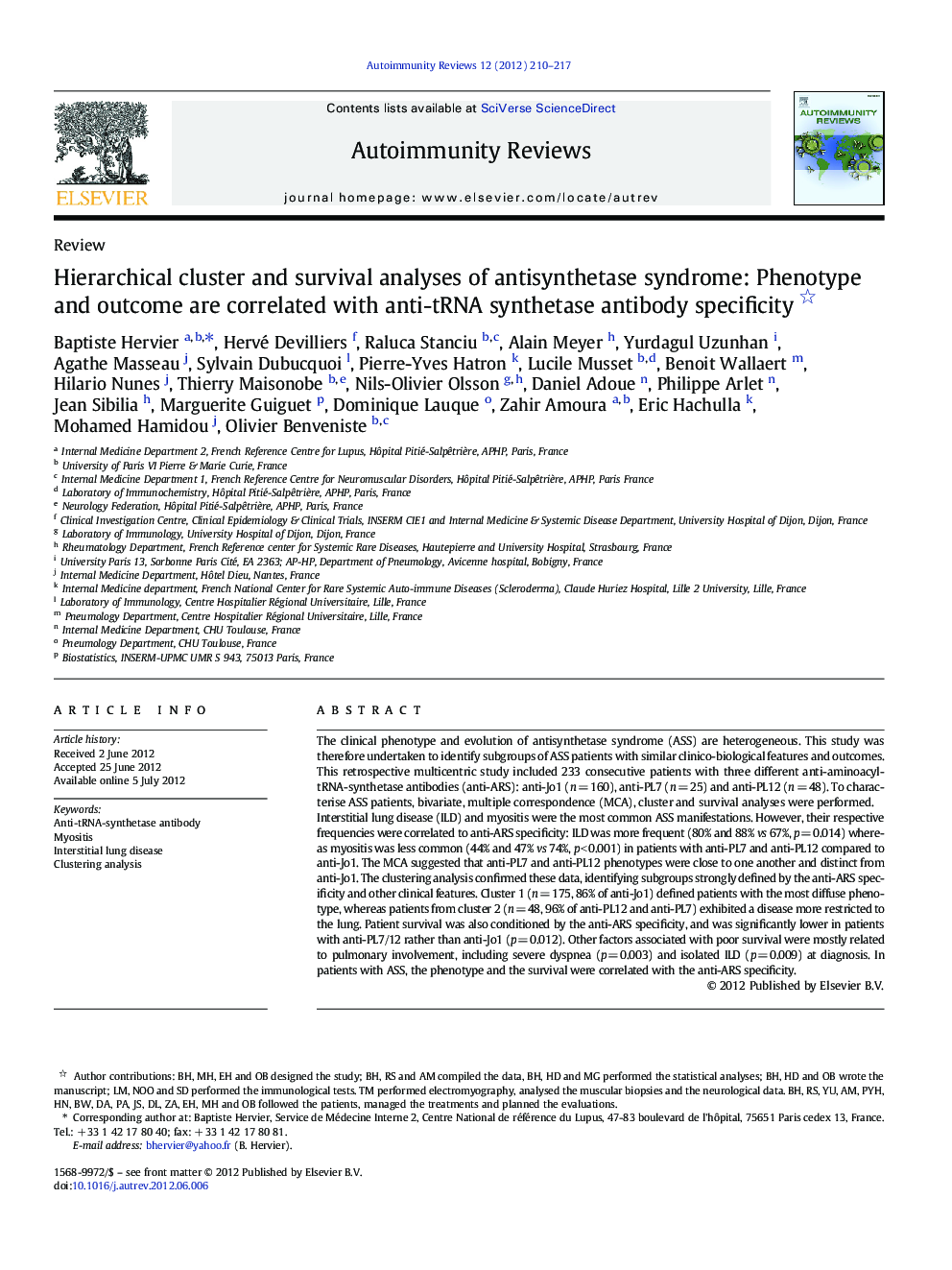| Article ID | Journal | Published Year | Pages | File Type |
|---|---|---|---|---|
| 6114625 | Autoimmunity Reviews | 2012 | 8 Pages |
Abstract
Interstitial lung disease (ILD) and myositis were the most common ASS manifestations. However, their respective frequencies were correlated to anti-ARS specificity: ILD was more frequent (80% and 88% vs 67%, p = 0.014) whereas myositis was less common (44% and 47% vs 74%, p < 0.001) in patients with anti-PL7 and anti-PL12 compared to anti-Jo1. The MCA suggested that anti-PL7 and anti-PL12 phenotypes were close to one another and distinct from anti-Jo1. The clustering analysis confirmed these data, identifying subgroups strongly defined by the anti-ARS specificity and other clinical features. Cluster 1 (n = 175, 86% of anti-Jo1) defined patients with the most diffuse phenotype, whereas patients from cluster 2 (n = 48, 96% of anti-PL12 and anti-PL7) exhibited a disease more restricted to the lung. Patient survival was also conditioned by the anti-ARS specificity, and was significantly lower in patients with anti-PL7/12 rather than anti-Jo1 (p = 0.012). Other factors associated with poor survival were mostly related to pulmonary involvement, including severe dyspnea (p = 0.003) and isolated ILD (p = 0.009) at diagnosis. In patients with ASS, the phenotype and the survival were correlated with the anti-ARS specificity.
Related Topics
Life Sciences
Immunology and Microbiology
Immunology
Authors
Baptiste Hervier, Hervé Devilliers, Raluca Stanciu, Alain Meyer, Yurdagul Uzunhan, Agathe Masseau, Sylvain Dubucquoi, Pierre-Yves Hatron, Lucile Musset, Benoit Wallaert, Hilario Nunes, Thierry Maisonobe, Nils-Olivier Olsson, Daniel Adoue,
